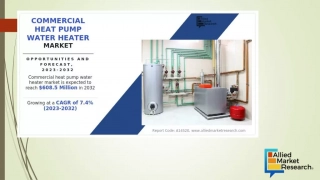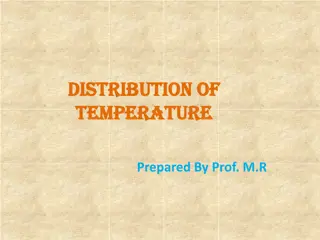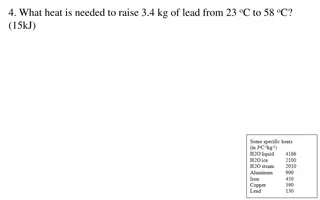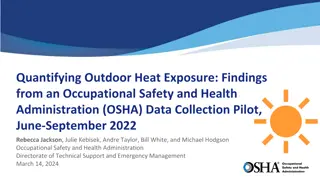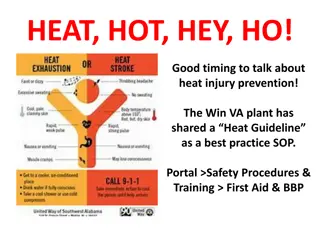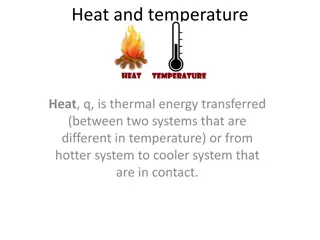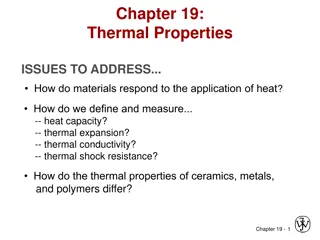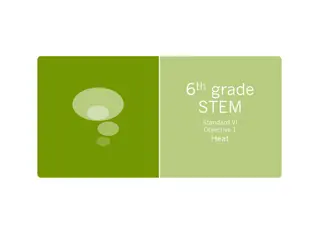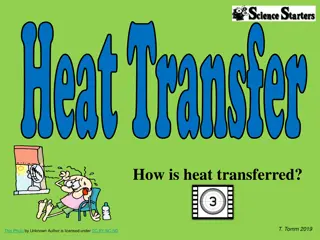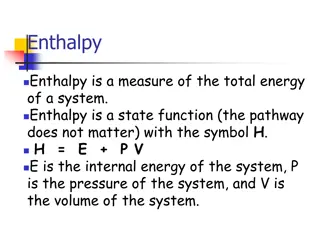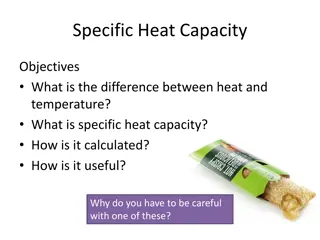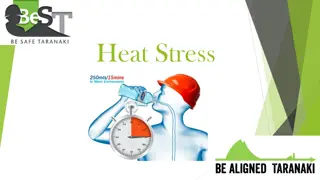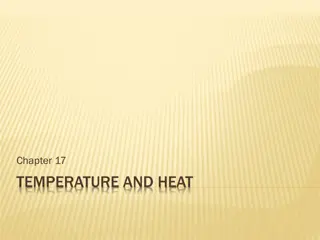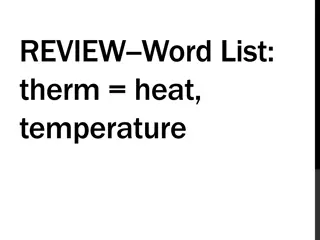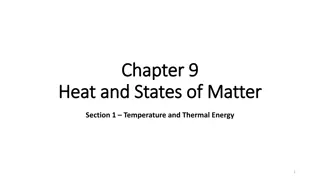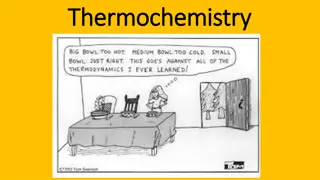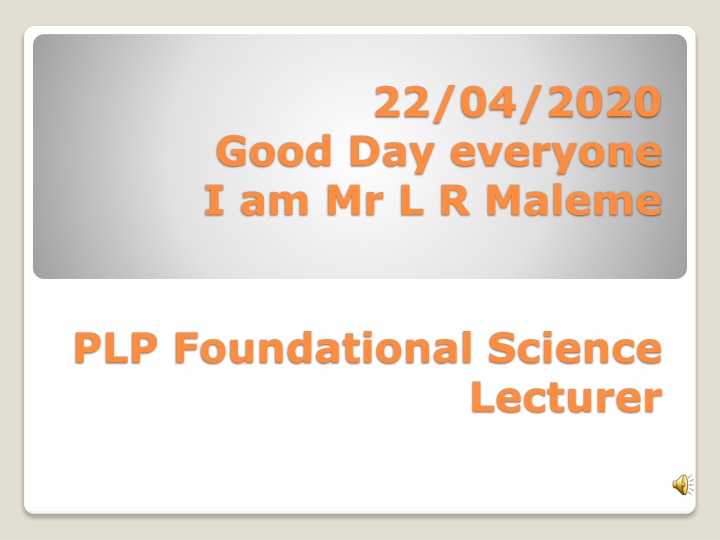
Heat and Temperature in Foundational Science Lectures
Explore the concepts of heat, temperature, and energy in foundational science lectures with Mr. L.R. Maleme. Dive into topics like heat energy, expansion of matter, thermocouples, and more. Learn to differentiate between heat and temperature, understand Celsius and Kelvin scales, and convert between them. Engage in activities on temperature scales, conduction, and radiation to enhance your knowledge. Discover the significance of heat energy on Earth and how it is derived from the sun.
Download Presentation

Please find below an Image/Link to download the presentation.
The content on the website is provided AS IS for your information and personal use only. It may not be sold, licensed, or shared on other websites without obtaining consent from the author. If you encounter any issues during the download, it is possible that the publisher has removed the file from their server.
You are allowed to download the files provided on this website for personal or commercial use, subject to the condition that they are used lawfully. All files are the property of their respective owners.
The content on the website is provided AS IS for your information and personal use only. It may not be sold, licensed, or shared on other websites without obtaining consent from the author.
E N D
Presentation Transcript
22/04/2020 Good Day everyone I am Mr L R Maleme science PLP Foundational Science Lecturer
Today we are going to focus on unit 2.3 Which is heat and temperature The unit has the following topics: (on the student guide) 2.3.2 heat energy Page 64 for today 2.3.3 Expansion of solids, liquids and gases Pg 66 today 2.3.4 Kinetic energy of matter pg 69 2.3.5 The thermocouple Pg 70 2.3.6 Thermo-conductors and thermo- insulators pg 73
On the workbook the topic 2.3: heat and energy is on page 52 Activity 2.9 temperature scales (class work and homework) pg 52 Activity 2.10 Convention, conduction and radiation pg 53 Activity 2.11 Expansion (Class work) pg54 Temperature scales: We use different temperature scales in our lives to measure Read on your student guide Pg: 61 and name a common Instrument used in the health profession to measure body temperature.
Make sure you can clearly differentiate/ explain between: ( By definition ) 1. Heat and 2. Temperature Make sure you can clearly differentiate/ explain the difference between 1. Celsius scale 2. Kelvin Scale And how to convert between the 2
2. Heat Introduction: We use heat in our in daily life s to cook, warm ourselves and so forth, heat is used on page 54 of your study guide to effect a change On water. go to the page and recap. And the examples of chemical change caused by heat eg: burning wood or cooking on page Pg 55. Read through page 64 66 of you student guide for an intro into heat.
Now let us do one example of each workbook activity so that we get an idea how we convert from one scale to the other the basic is: 0 deg Celsius = 273 kelvin so 15 deg = 15+273= 288 K do your workbook exercises on Pg:52 as I have showed you how to convert
The next topic is heat Heat energy: Here on earth we live by the Law of the Conservation of Energy. Pg 64 on your student guide: So where do we get our energy from if we cannot create it ourselves? All the energy used on this planet comes from the sun. Any source of energy that we can think about, can be traced back to the process of photosynthesis used by plants to create energy-containing materials Pg 64 on your student guide
The last topic to be covered on your student guide and workbook is Radiation, conduction and convection If you take a pan out of a cupboard, the pan feels cold. If you put cold water in the pan, everything will still feel cold. If you now put the pan over a hot fire, things start to change Pg 65 on your student guide The heat from the fire travels through the air is an example of radiation. The hot water rising up inside the water is spreading heat through the process of convection. The heat that you can feel in the handle of the pan is spread through the process of conduction.
Hot air also spreads heat through convection so the air around or the fire or around a heater or inside an oven also feels hot The heat from the fire that travels through the air is an example of radiation. The hot water rising up inside the water is spreading heat through the process of convection. The heat that you can feel in the handle of the pan is spread through the process of conduction. Hot air also spreads heat through convection so the air around or the fire or around a heater or inside an oven also feels hot GO to page 53 of your workbook and fill in the table provided based on the above explanation of radiation convection and radiation


